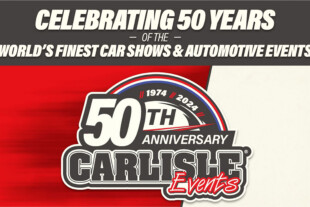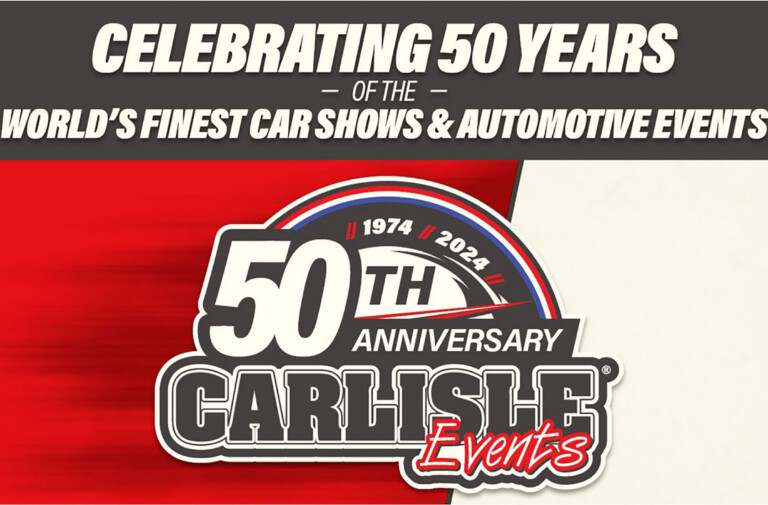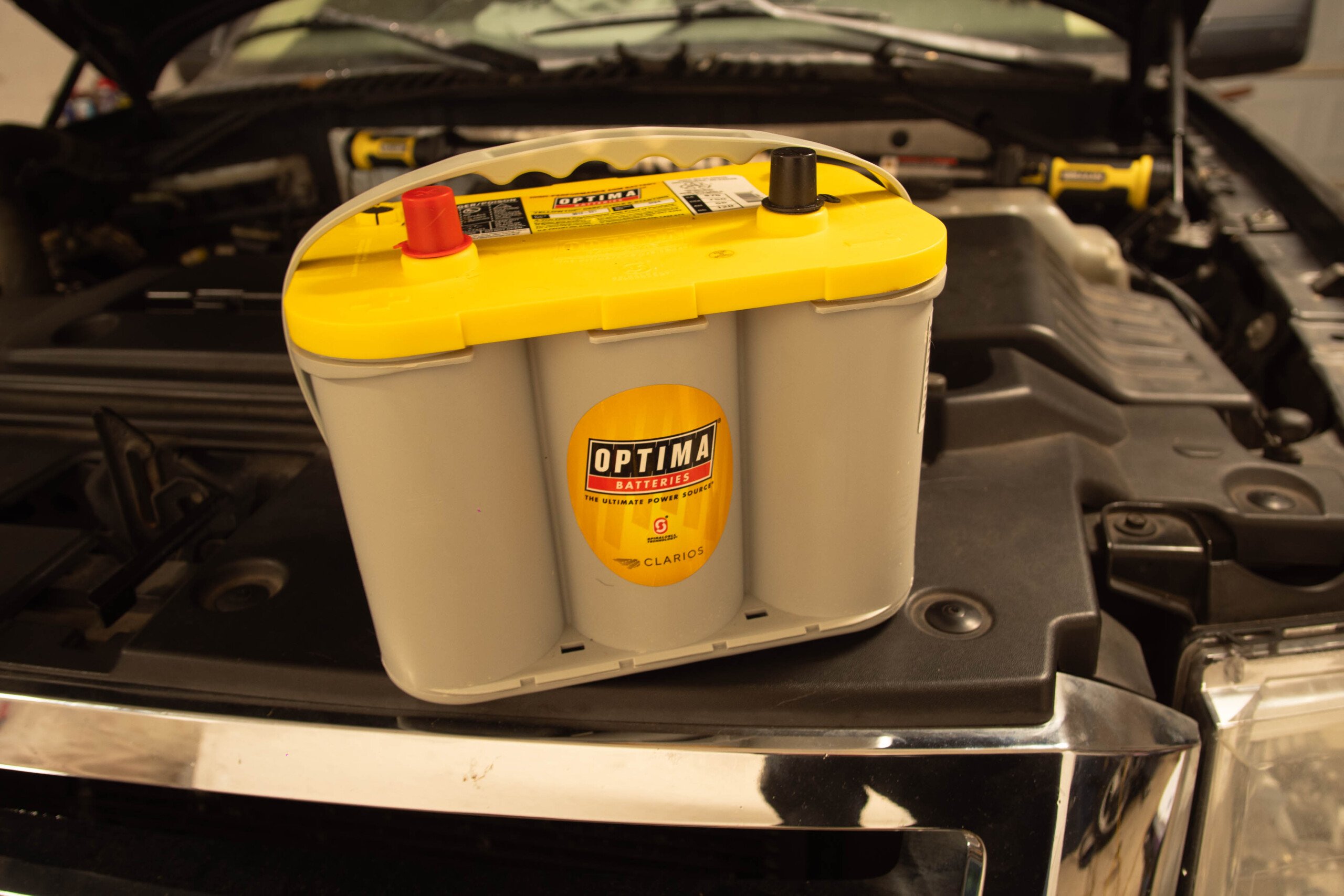Drag racing is all about going as fast as you can, but what some people seem to forget is that at the end of the track you need to be able to stop the car. Sounds like “day one” stuff, but I’ve seen too many cars with built motors running on stock brakes, sometimes even drums, that just want to fail. If your car won’t start, at worst you’ll lose a race. If it won’t stop, you could lose your life. With that in mind, we set out to put as much attention into Grandma’s “whoa” as we did in her “go.”
Now the thought of seeing poor dear old Grandma at Runoff Beach was something that we just couldn’t live with. It was bad enough for the old gal that she’ll have to live with the noise from the 555ci Edelbrock/Pat Musi Big Block that will be shoehorned under her hood. We thought the least we could do is send her down the track with a good set of brakes. To do so we chose Aerospace Components lightweight drag racing brakes. Not only will replacing the well-worn stock brakes help improve stopping power, but they just might help us free up a little horsepower to as well.
Grandma has already been through a lot, from having been driving to near destruction by our now Editor-in-Chief to being striped of everything she has. So we redeemed ourselves a little bit when we did some joint replacement by upgrading her underpinnings with some really nice Energy Suspension body bushings. Now I really think we are going to be in old Grandma’s good graces. With a brand-spanking-new set of brakes behind her wheels Granny should have no problem stopping that big inch mill, no matter how much it fights her.
Aerospace Components is best known for their vacuum pump system and lightweight brakes. What most people don’t know is that Aerospace Components actually has a wide variety of products, including water pumps, fuel pumps, 9-inch Ford “Bullet-Proof” third members, shifters, billet nitrous bottle brackets and “pro dial” boards. From its humble beginnings in Dearborn, Michigan twenty-two years ago, Aerospace has grown to become one of the most advanced companies in the industry.
Brakes and Drag Racing
Brakes capable of bringing your car to a safe stop at the end of the track are a prerequisite if, like most racers, you’d like to make more than one pass without extensive repair work and hospitalization. But beyond the obvious advantages of being able to slow down, a good set of brakes can also help you increase wheel horsepower. “Fiction!” you say? Consider the amount of rotating mass your engine has to turn in on the vehicle, talking everything from accessories driven off to the belts to the wheels and tires into account. By reducing the amount of rotating mass, the engine won’t have to work as hard and this frees up horsepower. The brakes are another example of rotating mass, so therefore by installing lighter brakes with less inertia, you can reduce the amount of horsepower lost before it does the important work of getting you down the track.

Aerospace’s lightweight billet aluminum hubs feature screw-on dust caps and are drilled with a dual bolt pattern.
Brakes for drag racing are designed a little differently than ones use in a street or even a roadrace application. Instead of having to withstand repeated uses, drag racing brake kits must be able to slow cars going extremely fast in one very quick use. With that in mind, even picking things like brake pads is important.

Brakes aren’t a one-size-fits-all proposition. Rotors, calipers, and even pads must be matched to the car’s weight, speed, and use. Drag race brakes designed to bring a 3,200 pound car down from 175 miles per hour, then cool down in the pits between rounds won’t work very well for repeated stops on the street, and vice versa.
Aerospace Brakes

Aerospace Components offers brake components “a la carte” or as complete Front and Rear Brake Kits, as shown here
Aerospace sent us their Heavy Duty Kit for use on Grandma. The kit, designed for cars weighing between 2,600 and 3,000 pounds, came with everything we needed from the 10.25” diameter drilled rotors to a set of Hawk pads, with all the bearings and seals we needed to make Grandma a super stopper. Constructed from billet aluminum, the four-piston calipers felt light when we picked them up but we wanted to see just how light. After stealing the scale from the shipping department, and defacing it with the oily, grimy stock brakes the results were surprising, but more on this later. For now, on to the installation…
|
|
Kit Components:
• Billet Aluminum 4 Piston Calipers
• Billet Aluminum Mounting Brackets
• Grade 8 Hardware
• Billet Aluminum Hubs with Screw-on Dust Caps
• Bearings and Seals Included
• Hawk Brake Pads
• 10 1/4” Diameter Drilled Rotors
• 1/2” Studs, 3” long
Installation
This first thing we tackled was removing the stock system. After breaking the old bolts loose we pulled the well-worn set of brakes, and while BJ was taking off the passenger side I took the driver’s side pieces to weigh and compare with the Aerospace Brakes. Throwing all the Aerospace kit components on the scale, the weight came out to 30 pounds for the entire front kit, including brake pads. With BJ still slacking on the other side, I put my half of the stock brakes on the scale to see how they stacked up.

The only things that these old stock brakes are going to be stopping is the back door of the shop from closing.
It was very surprising to see the scale read just a hair over 23 pounds for the driver’s side alone. That was without brake pads too, as there were none left to weigh! We cut nearly half the total weight off the front brakes by installing Aerospace’s kit. Remember that a good proportion of that is rotating mass as well. That means more of our big inch horsepower moving Grandma forward, and less lost spinning up the brake rotors.
I got back to Granny and BJ just in time to start putting on the Aerospace Kit. Our kit, as with many big brake conversions for cars of this generation, required that we trim the spindles. Aerospace provided us with a template for doing so. Our Cornwell Plasma Cutter made quick work of the thick steel and after a little bit more clean-up grinding we had enough clearance to mount the caliper bracket. When doing this yourself, a cutoff wheel and a grinder would do just fine – it just won’t be a quick as a plasma cutter or a torch. With our caliper bracket mounted we then placed the rotors on the spindle and put the greased bearings in place. Next was the cotter pin, followed by the dust cap.

The “got to have” tool – the plasma cutter. Patience and a cutoff wheel will give you the same end result, though.

With the spindle trimmed and the Aerospace bracket mounted, the hubs go on. Be sure to use lots of grease, both in the bearings and the spindle shaft.

Proper spindle nut torque is important for bearing life and safety. Speaking of which, don’t forget that cotter pin, and don’t reuse an old one – crashing a car because you cheaped out on a ten-cent part is inexcusable.

The Aerospace kit includes half-inch diameter studs that are a tech-inspector-pleasing three inches long, giving plenty of thread engagement on the lug nuts no matter how thick the wheel hub is.
Capping off our Aerospace system are the Billet Aluminum Four-Piston calipers. With no brake lines run yet this was as simple as placing the new Hawk pads in the caliper and bolting it to the mount we installed earlier. After a little bit of shimming to align the rotor and caliper properly, the complete Aerospace Components kit was on. All that remains is the plumbing, and Grandma will be able to stop on a dime and give nine cents in change.

When installing the calipers, a little shimming is necessary to properly center the caliper body relative to the rotor to ensure even pressure and wear.

The finished product is a huge improvement in both appearance and performance, and cuts the total weight of the front brake system almost in half.
Top 5 Tips For Upgrading Brakes
Brought to you by Matt Moody at Aerospace Components
1) Specify Not Only Your Vehicle But Application
This might sound like a no-brainer, but Matt explained that trying to save money by buying a less expensive kit might save you money up front, but in the end the brakes could fail due to being operated outside of what they are designed for. Brake kits are engineered for specific weight ranges, speeds, and usage profiles (street, strip, or roadracing). If you are unclear about what you need, call the experts at Aerospace. They are more than happy to assist you in choosing your kit.
2) Change Your Brake Lines
Cracked or leaking lines are one of the most common failures when it comes to brakes. By swapping them out to stainless steel you not only get a better performing product but a better looking one as well
3) Make Sure Your Master Cylinder Is The Correct Size
This is where people start to get lost. “Make sure if you are upgrading from drum brakes to disc brakes that you have the correctly-sized master cylinder,” Moody said. Drums and discs require different brake fluid pressure and volume. “Trying to use your old one will only result in poor performance of your brakes.”
4) Thread locker Is Your Best Friend In Your Race car
Moody told me to lock tight everything with “permanent” threadlocker, such as Loctite Red 271. If you don’t, the bolts could back out, and when you are hauling down the track that is the last thing you want to happen.
5) Know What You Are Doing
This one is common sense, more than anything. If you don’t know what you are doing when it comes to installing brakes, have someone who knows disc brakes help you. If you don’t know anyone, you should take it to a shop to have them installed. Brakes are a safety issue, and not only for you in the car but other people around you. Don’t just hack a set of brake on your car; do it right.
What’s Next with Granny
Grandma is coming along pretty quick now. Soon the car will be off to the chassis shop to get a full Chassis Engineering cage and mini-tubs. After that, we will be putting on the rest of the Aerospace Components brake parts, including the rear brakes and master cylinder. Before long, old Grandma will be screaming down the track, and now, thanks to Aerospace Components, we won’t be screaming too when the run is over.


















